If you’re a B2B marketer, you need to understand the algorithms that determine what content users see, across all key social media platforms. These elusive, ever-changing formulas are incredibly powerful. Knowing how to work with them can make the different between posting content that hardly anyone sees, and posting content that helps you meet your marketing objectives.
If you follow the news, you’ll know that some of the best algorithm experts today aren’t marketers. Algorithms are developing a bit of a reputation, thanks to political events around the globe. But for most B2B marketers, our goal isn’t world domination. All we want is a little more exposure for our product, service or company. And with an understanding of the algorithms, we can achieve it.
Here, we look at the algorithms for Facebook, Twitter and LinkedIn.
1) Facebook algorithm
In January, Mark Zuckerberg announced Facebook’s new content changes in a Facebook post: “… recently we've gotten feedback from our community that public content -- posts from businesses, brands and media -- is crowding out the personal moments that lead us to connect more with each other. … As we roll this out, you'll see less public content like posts from businesses, brands, and media,” he wrote.
According to Zuckerberg, Facebook is now aiming for content that encourages “meaningful interactions between people.” Combine this with a renewed emphasis on connecting friends and family, and it becomes a much greater challenge for marketers. Keep these tips in mind for Facebook:
- Develop content that will spark discussions - Post content that will generate reactions (not engagement bait), and you’ll achieve the goal of encouraging interactions between people.
- Create new content for your posts - Facebook likes native content. Don’t just post links to a website.
- Use live video - Facebook LOVES live video. If your video also triggers engagement and discussions, even better.
- Post only quality, targeted content - If you post too much, or if you post overtly promotional material, your engagement score will decrease, and the algorithm will punish you.
How Does Facebook News Feed Ranking Work?
2) Twitter algorithm
The goal for Twitter’s algorithm is to increase engagement. So far, it’s not as complex as Facebook’s, so it’s a little easier to work within it. It uses engagement and interaction as the criteria, so make sure your tweets are engaging. Consider these suggestions:
Use Twitter Analytics to understand what your followers want, and give them more of it – you can see what their interests are, and how they react to your tweets.
Post at the right time of day – find out when your followers are online, and tweet then.
Post every day, and retweet and reply – the more you engage, the more the algorithm sees you as a valued member of the community.
Be an expert – focus on a topic or industry with your tweets, and make sure your bio is complete and up-to-date.
3) LinkedIn algorithm
LinkedIn uses algorithms and humans to assess the quality of content. If a human decides that your content is high-quality and high-interest, they will show it to more people. LinkedIn will also show content to the connections of the people who engage with it. If you like a post, or comment on it, LinkedIn will show it to your first-degree connections, and so on. So here also, engagement is the key to more exposure. Some other tips:
Clean up your connections – if your connections are a mish-mash of contacts from different industries, your content will engage some, and completely miss others. Try to keep you contacts consistent within your industry.
Original content – like the other platforms, original content is more successful than links.
Try different formats – use long articles, short posts, and “broetry” (these are long LinkedIn status posts that start with a hook to draw readers in.)
Want to learn more?
Sign up for our Infusinar on April 19: How Can B2B Companies Benefit from Social Media?
During this session we will provide you with a roadmap to build a solid social media strategy. We’ll present two effective social media case studies, and explain how B2B companies can use social media to:
- Establish a solid reputation
- Connect and engage with their customers
- Generate valuable leads
- Drive sales




